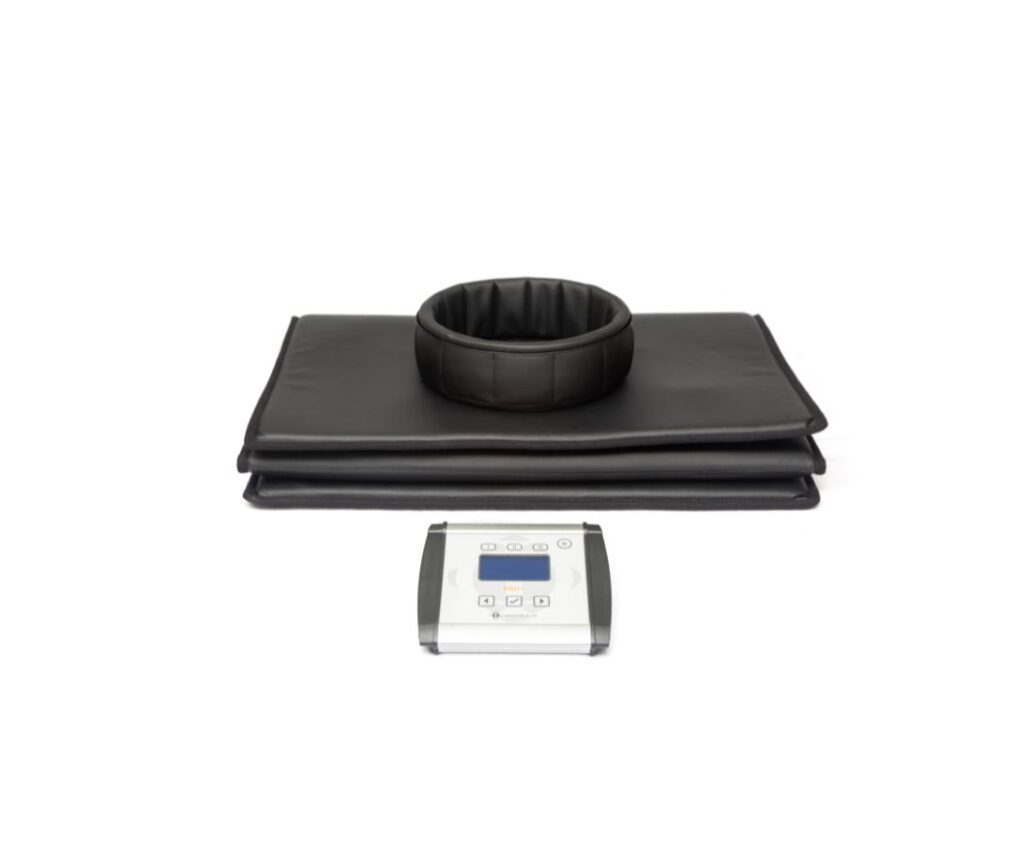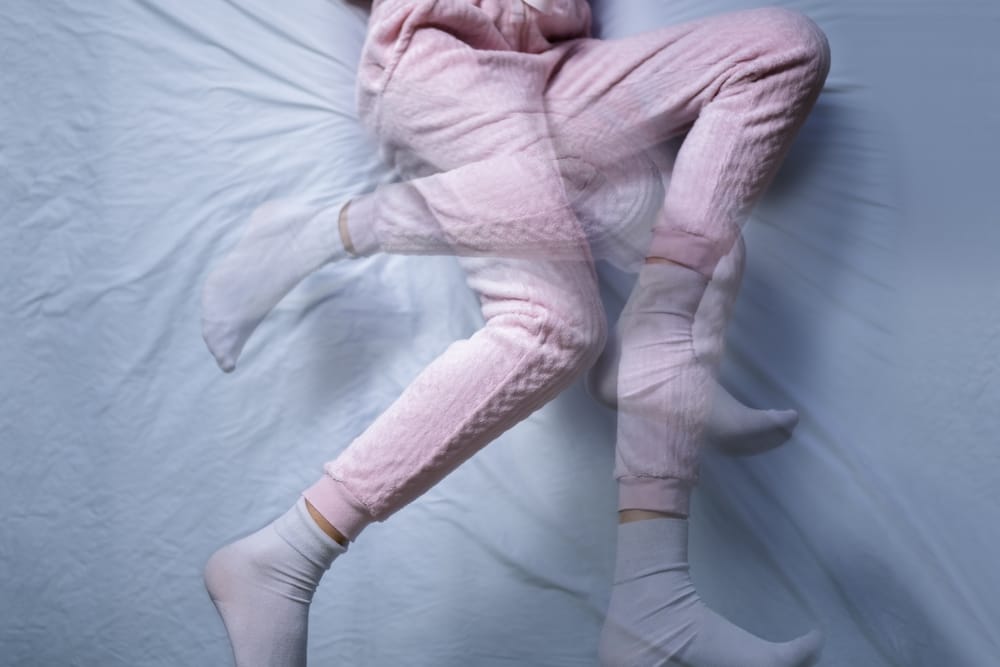Restless Leg Syndrome (RLS), also known as Willis-Ekbom Disease, is a neurological disorder characterized by an uncontrollable urge to move the legs, often accompanied by uncomfortable sensations. These sensations typically occur when a person is at rest, such as sitting or lying down, and are usually relieved temporarily by movement, such as stretching, walking, or shaking the legs.
Causes of RLS:
- Primary RLS: Often hereditary, with no identifiable underlying condition.
- Secondary RLS: Linked to other factors or conditions, including:
- Iron deficiency or anemia.
- Chronic diseases such as diabetes, kidney failure, or peripheral neuropathy.
- Pregnancy (especially in the third trimester).
- Use of certain medications (e.g., antidepressants, antihistamines).
- Lifestyle factors like caffeine, alcohol, or nicotine consumption.
The primary symptoms of Restless Leg Syndrome (RLS) include:

1. Uncomfortable Sensations in the Legs:
Described as crawling, tingling, itching, burning, pulling, throbbing, or aching.
- These sensations occur deep inside the legs, typically between the knee and ankle.
- Rarely, the arms or other body parts may also be affected.
2. Urge to Move the Legs:
- A strong, uncontrollable need to move the legs to relieve the uncomfortable sensations.
- Movement such as walking, stretching, or shaking the legs provides temporary relief.
3. Symptoms Worsen at Rest:
- Symptoms usually appear or worsen during periods of inactivity, such as sitting, lying down, or relaxing.
4. Symptoms Are Worse at Night:
- RLS symptoms are most intense in the evening or nighttime, often interfering with sleep.
5. Sleep Disturbances:
- Difficulty falling asleep or staying asleep due to symptoms, leading to fatigue or daytime drowsiness.
6. Periodic Limb Movements (PLMS):
- Involuntary leg jerking or twitching, particularly during sleep, which can disrupt sleep quality.
If these symptoms are persistent and interfere with daily life or sleep, consulting a healthcare professional for diagnosis and treatment is recommended.
Diagnosis:
There’s no specific test for RLS, but a diagnosis is based on symptoms, medical history, and ruling out other conditions. Blood tests may be done to check for iron deficiency or other underlying issues.
Treatment:
- Lifestyle Changes:
- Maintaining regular sleep patterns.
- Avoiding caffeine, alcohol, and tobacco.
- Engaging in moderate exercise.
- Medical Management:
- Iron supplements (if iron deficiency is present).
- Medications to regulate dopamine, such as dopamine agonists.
- Anti-seizure drugs or opioids in severe cases.
- Complementary Therapies:
- Massage, stretching, or warm baths before bed.
- PEMF Therapy (Pulsed Electromagnetic Field) is sometimes explored for symptom relief.
PEMF for Restless Leg Syndrome
PEMF therapy has shown promise in managing restless leg syndrome (RLS) by potentially addressing underlying causes such as poor circulation, nerve dysfunction, and inflammation. Here’s how it can help:

1. Improved Circulation
PEMF can enhance blood flow to the legs, reducing discomfort and the urge to move. Improved microcirculation may help nourish affected nerves and muscles.
2. Neurological Benefits
RLS is often linked to nerve signaling issues or imbalances in the central nervous system. PEMF therapy may help regulate neural activity, improving nerve communication and reducing symptoms like tingling or burning.
3. Pain and Inflammation Reduction
PEMF has anti-inflammatory properties and can alleviate muscle soreness or pain, which is often a secondary symptom of RLS.
4. Better Sleep Quality
RLS symptoms are more pronounced at night, disrupting sleep. PEMF therapy is known for its relaxing effects on the nervous system, potentially promoting better sleep.
Protocols
Frequency Recommendations
- Start with low frequencies (1–15 Hz) for nervous system relaxation.
- Use medium frequencies (30–50 Hz) to boost circulation and manage pain if needed.
Duration
- Daily sessions: Start with 20–30 minutes twice a day for noticeable results.
- Maintenance: After improvement, reduce to 2–3 sessions per week.
Placement
- For full-body mats, simply lie down for whole-system treatment.
- For localized devices, place the applicator directly on the calves, thighs, or feet.
Tips for Success
- Combine with lifestyle changes: Regular stretching, warm baths, or magnesium supplements can enhance results.
- Track your progress: Use a journal to note symptom severity before and after sessions.
- Consistency is key: PEMF therapy often shows cumulative benefits
- Maintain a consistent sleep schedule to help manage RLS symptoms.
Clinical Evidence
While large-scale studies on PEMF for RLS are limited, anecdotal reports and small-scale research suggest it may reduce discomfort and improve quality of life for those with RLS. It works well as a complementary therapy alongside other treatments, such as medications or lifestyle modifications.
- contraindications and special considerations:
PEMF therapy should NOT be used by:
While PEMF therapy is generally considered safe for most people, certain individuals should avoid it or use it with caution. Here’s a list of contraindications and special considerations:
Pregnant Women: Safety during pregnancy hasn’t been conclusively established.
Individuals with Pacemakers or Implantable Medical Devices: PEMF may interfere with the function of electronic implants like pacemakers, defibrillators, or insulin pumps.
Active Bleeding Disorders: PEMF may increase blood flow, potentially exacerbating active bleeding.
Children: While generally safe, use low-intensity settings and consult a pediatrician.
Positive Experiences:
- “I started using PEMF at night before bed, and the restless sensations in my legs have decreased significantly. I can finally sleep through the night without waking up to move around.” (Timothy H)
- “I was skeptical at first, but after two weeks of using the therapy daily, my legs feel much calmer. It’s been a game-changer for my sleep.” Richard M)
- “The tingling and discomfort that used to bother me are almost gone. PEMF has been very helpful for managing my RLS.” (Dennis F)
Conclusion
PEMF therapy offers a promising, non-invasive approach to managing Restless Leg Syndrome by improving circulation, modulating nerve activity, and promoting relaxation. While more extensive research is needed, its potential to reduce discomfort and improve sleep quality makes it a valuable complementary therapy for RLS. Integrating PEMF with lifestyle modifications and other treatments may enhance overall effectiveness and quality of life for individuals with RLS.



0 Comments